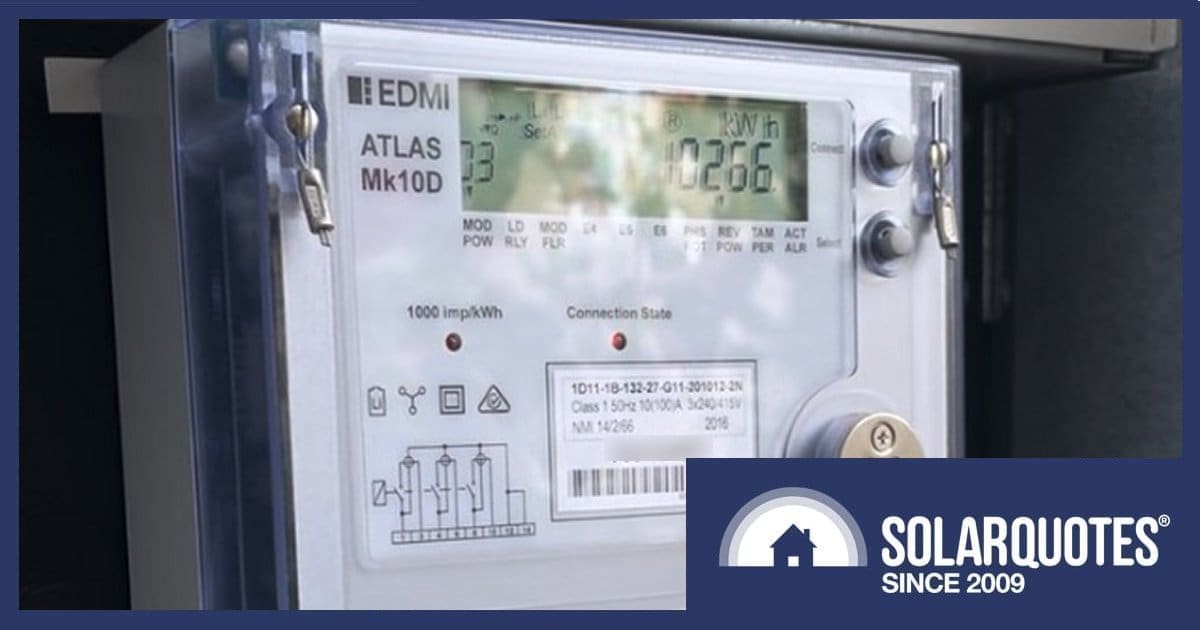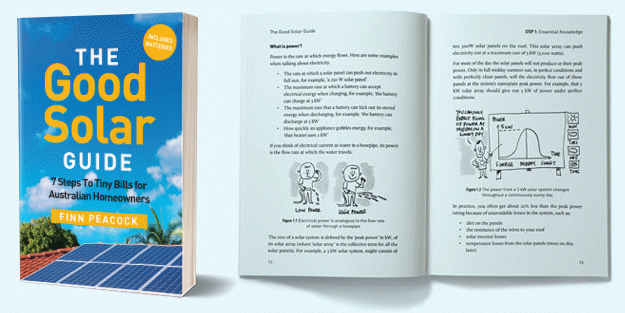
The Australian Energy Market Commission (AEMC) wants new smart meter installations to have real-time data communications capability, and currently is seeking feedback on its draft rule.
What’s The AEMC Plan For Smart Meter Data?
The AEMC is proposing all new smart meters installed for households and small businesses from 2028 to have embedded wireless and wired real-time data communications functionality, which it says would introduce a uniform low-cost technology to enable consumers to access this data.
How ‘real-time’ would this data be?
The minimum timeframe for real-time data to be received by an external device would be a latency of no more than five seconds, or a longer latency to be specified in situations where AEMO considers that would be justified.
And how low cost is it?
For scheduled upgrades/replacements:
“Consumers would be able to access real-time data from the smart meter at no upfront charge once the meter is upgraded from 2028 onwards,” says AEMC Chair Anna Collyer.
And then the cost would be approximately $0.66 per meter, per year, added on to a regular electricity bill.
“Stakeholders asked us to investigate the value of real-time data, and how access to real-time data might be enabled at no upfront charge in the near term to assist consumers with their bills, and we have come up with a pragmatic solution that strikes the right balance,” Ms Collyer said.
For electricity customers wanting real-time capability before a scheduled smart meter upgrade, they would be provided an option to retrofit or replace their meter for a “reasonable price”.
What Are The Claimed Benefits Of Real-Time Data?
The AEMC says the change could benefit electricity customers in several ways, such as:
- gaining a better understanding of energy use patterns, and making more informed decisions.
- potential saving money on energy bills.
- enabling third-party service providers appointed by customers to also access the data, with appropriate protections.
Next Steps
An online forum will be held on 2 October for interested parties to ask questions and provide feedback, and feedback is being accepted by the AEMC until 23 October 2025. Further information is available on the AEMC’s smart meter ‘Real-time data for consumers” project page.
The draft determination is a result of a rule change request from Energy Consumers Australia (ECA) last year.
“We think everyone should have access to their own energy use data so they can make informed decisions about their energy use,” says ECA. “After all, how can you save money if you don’t know which one of your appliances is using so much energy?”
More On Smart Meters
In 2024, the AEMC announced a final rule requiring smart meters to be deployed across the National Electricity Market (NEM) by 2030.
Unlike the older spinning-disc and some digital meters, smart meters currently measure electricity consumption (and exports from solar households) in 5-30 minute intervals, and transmit this data to the household’s electricity retailer for billing purposes. If you’ve had solar panels installed in the past few years in most parts of Australia, or are on a Time-of-Use (ToU) electricity plan, your home has a smart meter.
Retailers may already offer customers access to this information through their electricity account interface, or a portal where you can download your smart meter data. This is usually in what’s called an NEM12 file in CSV format1.
But it’s not real-time – the information is usually at least one day old; which isn’t much help if you’re wanting to see what’s happening with consumption and exports right now. But customer-owned devices called consumption meters that are increasingly being fitted to switchboards as part of solar/battery installations can also measure energy coming from and going into the grid in near real-time; and are a highly recommended option.
Footnotes
- One of the ways you can use this data is with SolarQuotes add battery calculator, which will accurately calculate savings and payback if you’re thinking about retrofitting a battery to your solar power system. ↩

 RSS - Posts
RSS - Posts



About time. So called current ‘smart meters’ are not smart at all. Where is the ‘smarts’ in collecting simplistic usage data and transmitting this in one dump wirelessly every 24hrs and then making this available in .csv file format. Oooh sexy!
This is a welcomed and long overdue initiative I personally look forward to being rolled out.
Don’t networks also want to see behind the meter consumption, not just net grid usage so that networks can be planned for times when self-generation/consumption is not possible?
This could avoid overbuilding networks as more home batteries get installed whilst still ensuring as much grid stability as possible. Also gives us a better idea of how we are progressing towards net zero at a household level.
‘…or are on a Time-of-Use (ToU) electricity plan, your home has a smart meter.’
I’m going to be a pedant here are note this isn’t entirely true. I had a digital interval meter for 10 years which measured Time of Use, I was on a TOU plan as well but the meter did not have remote data capabilities and required a manual read.
I did get an actual smart meter when I installed my solar system however. Only difference was remote data transmission.
For me I’ll always chose to have.my own CT installed. I then get real time data as I need at no further cost. For those as old as me I see meter data costs wether delayed or realtime like the old telstra land line phone. Something that you can buy for bugger all yet also something that you have to pay a subscription on forever.
Another form of parasite costs that you probably can’t avoid…and yet long term a small but not insignificant cost rhat will sway those who would abandon the grid altogether.
Where does this leave wireless smart meters installed before this date? Are these upgradable without a whole meter update? Or will they work as via a feed of some sorts (Rest API or similar).